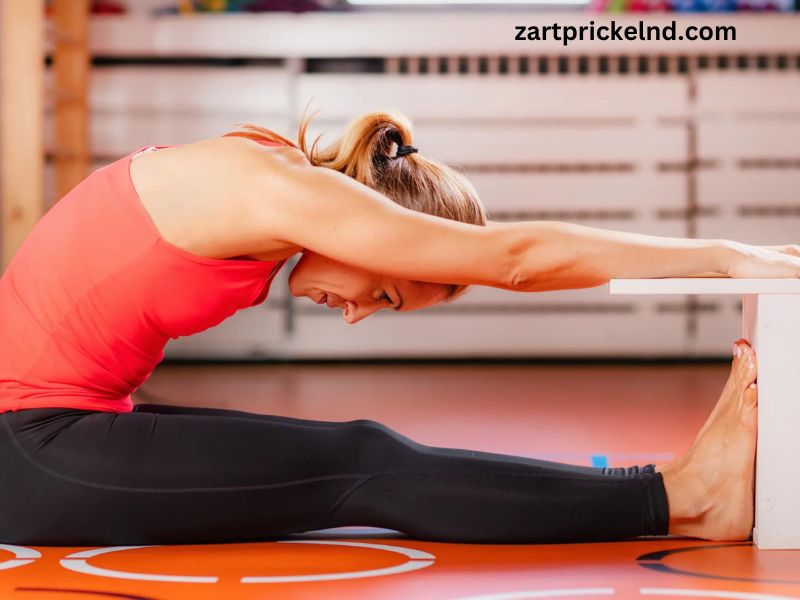The Sit & Reach Test is a widely used assessment tool in the field of health and fitness. This simple yet effective test measures an individual’s flexibility, which is a crucial component of overall health-related fitness. Flexibility refers to the range of motion around a joint or series of joints, and it plays a vital role in maintaining proper posture, reducing the risk of injury, and enhancing physical performance.
As an individual, understanding the importance of health-related fitness and how the Sit & Reach Test can provide valuable insights into your flexibility is crucial for optimizing your overall well-being. By delving into the details of this test, you’ll gain a deeper appreciation for the health-related fitness component it measures and how you can use this information to improve your physical condition.
Understanding Health-Related Fitness Components
Health-related fitness is a multifaceted concept that encompasses several key components, each contributing to an individual’s overall physical well-being. These components include:
- Cardiorespiratory Endurance: The ability of the heart, lungs, and blood vessels to supply oxygen and nutrients to the working muscles during sustained physical activity.
- Muscular Strength: The maximum force that a muscle or muscle group can exert against a resistance.
- Muscular Endurance: The ability of a muscle or muscle group to perform repeated contractions against a resistance for an extended period.
- Flexibility: The range of motion around a joint or series of joints.
- Body Composition: The ratio of fat mass to lean body mass, including muscle, bone, and other tissues.
These components work together to promote overall health, reduce the risk of chronic diseases, and enhance physical performance. Assessing and improving these fitness components is crucial for maintaining a healthy and active lifestyle.
Importance of Assessing Health-Related Fitness
Evaluating your health-related fitness is essential for several reasons:
- Identifying Strengths and Weaknesses: By assessing your fitness levels, you can identify areas where you excel and areas that need improvement. This information can guide your fitness goals and help you develop a targeted exercise program.
- Monitoring Progress: Regular fitness assessments allow you to track your progress over time, ensuring that your exercise routine is effective and helping you stay motivated.
- Preventing Injuries: Understanding your fitness levels, particularly in areas like flexibility, can help you identify and address potential risk factors for injury, allowing you to take preventive measures.
- Improving Overall Health: Improving your health-related fitness components can have a positive impact on your overall physical and mental well-being, reducing the risk of chronic diseases and enhancing your quality of life.
Overview of the Sit & Reach Test
The Sit & Reach Test is a simple and widely used assessment tool that measures the flexibility of the lower back and hamstring muscles. The test involves sitting on the floor with your legs extended and reaching forward as far as possible, with your hands sliding along a measuring device or box.
The distance reached, measured in centimeters or inches, provides an indication of your flexibility in the targeted muscle groups. This test is commonly used in fitness assessments, physical education settings, and research studies to evaluate and monitor an individual’s flexibility over time.
How to Perform the Sit & Reach Test
To perform the Sit & Reach Test, follow these steps:
- Sit on the floor with your legs extended in front of you, your feet shoulder-width apart, and your shoes removed.
- Place a measuring device or a standard sit-and-reach box in front of you, with the 0-inch or 0-centimeter mark closest to your feet.
- Keeping your legs straight, slowly reach forward and slide your hands along the measuring device as far as you can go, keeping your fingertips even.
- Hold the stretched position for at least 2 seconds, and record the distance reached.
- Repeat the test two or three times, and record the best score.
It’s important to note that proper form and technique are crucial for accurate and reliable results. Avoid bouncing or jerking motions during the test, as this can lead to injury and skew the measurements.
Interpreting the Results of the Sit & Reach Test
The results of the Sit & Reach Test are typically interpreted based on age and gender-specific norms or standards. These norms provide a reference point for understanding your flexibility level compared to others in your age group and gender.
Here’s a general interpretation of the Sit & Reach Test results:
- Excellent Flexibility: Scores above the 90th percentile for your age and gender.
- Good Flexibility: Scores between the 70th and 90th percentiles for your age and gender.
- Average Flexibility: Scores between the 30th and 70th percentiles for your age and gender.
- Below Average Flexibility: Scores between the 10th and 30th percentiles for your age and gender.
- Poor Flexibility: Scores below the 10th percentile for your age and gender.
It’s important to remember that these interpretations are general guidelines, and your individual flexibility may be influenced by factors such as your physical activity level, age, and any underlying health conditions.
The Health-Related Fitness Component Measured by the Sit & Reach Test
The Sit & Reach Test primarily measures the flexibility of the lower back and hamstring muscles, which is a crucial component of health-related fitness.
Flexibility is essential for several reasons:
- Improved Range of Motion: Increased flexibility allows for greater range of motion around the joints, which can enhance physical performance and reduce the risk of injury.
- Reduced Muscle Tension: Flexible muscles are less prone to tightness and tension, which can lead to discomfort, pain, and decreased mobility.
- Enhanced Posture and Alignment: Improved flexibility in the lower back and hamstring muscles can contribute to better posture and spinal alignment, reducing the risk of back pain and other musculoskeletal issues.
- Increased Ease of Movement: Flexible muscles and joints allow for more effortless and efficient movement, which can improve overall physical function and quality of life.
By understanding the health-related fitness component measured by the Sit & Reach Test, you can better appreciate the importance of maintaining and improving your flexibility, as it directly impacts your overall physical well-being.
Other Tests for Measuring Different Health-Related Fitness Components
While the Sit & Reach Test focuses on assessing flexibility, there are other tests that evaluate the various components of health-related fitness:
- Cardiorespiratory Endurance: The 1-mile run/walk test, the 12-minute Cooper test, and the step test.
- Muscular Strength: Grip strength test, push-up test, and one-repetition maximum (1RM) tests.
- Muscular Endurance: Push-up test, sit-up test, and plank test.
- Body Composition: Body mass index (BMI), skinfold measurements, and bioelectrical impedance analysis.
Incorporating a variety of fitness assessments can provide a comprehensive understanding of your overall health-related fitness, allowing you to develop a well-rounded exercise program that addresses all the critical components.
Benefits of Improving the Health-Related Fitness Component Measured by the Sit & Reach Test
Enhancing the flexibility of your lower back and hamstring muscles, as measured by the Sit & Reach Test, can offer numerous benefits:
- Reduced Risk of Injury: Improved flexibility in these muscle groups can help prevent strains, sprains, and other musculoskeletal injuries, particularly during physical activity.
- Enhanced Physical Performance: Greater range of motion and flexibility can translate to improved athletic performance, allowing for more efficient and powerful movements.
- Improved Posture and Spinal Health: Flexible lower back and hamstring muscles can contribute to better posture and spinal alignment, reducing the risk of back pain and other related issues.
- Increased Ease of Movement: Improved flexibility can make everyday activities, such as bending, reaching, and walking, more comfortable and effortless.
- Enhanced Quality of Life: By improving your flexibility, you can experience increased mobility, reduced discomfort, and an overall enhancement in your physical well-being, which can positively impact your daily life and overall quality of life.
Incorporating flexibility exercises, such as stretching and yoga, into your regular fitness routine can help you achieve these benefits and optimize the health-related fitness component measured by the Sit & Reach Test.
Conclusion
The Sit & Reach Test is a valuable assessment tool that provides insight into the flexibility of your lower back and hamstring muscles, a crucial component of health-related fitness. By understanding the importance of this fitness component and how to interpret the results of the Sit & Reach Test, you can take proactive steps to improve your flexibility and overall physical well-being.
Regularly assessing your health-related fitness, including your flexibility, can help you identify areas for improvement, track your progress, and develop a comprehensive exercise program that addresses all the critical components of fitness. Enhancing your flexibility can lead to reduced injury risk, improved physical performance, better posture, and an enhanced quality of life.
To get started on improving your flexibility and overall health-related fitness, consider scheduling a consultation with a certified fitness professional or health coach. They can help you develop a personalized exercise plan, guide you through the proper techniques for the Sit & Reach Test, and provide valuable insights to help you achieve your fitness goals.



